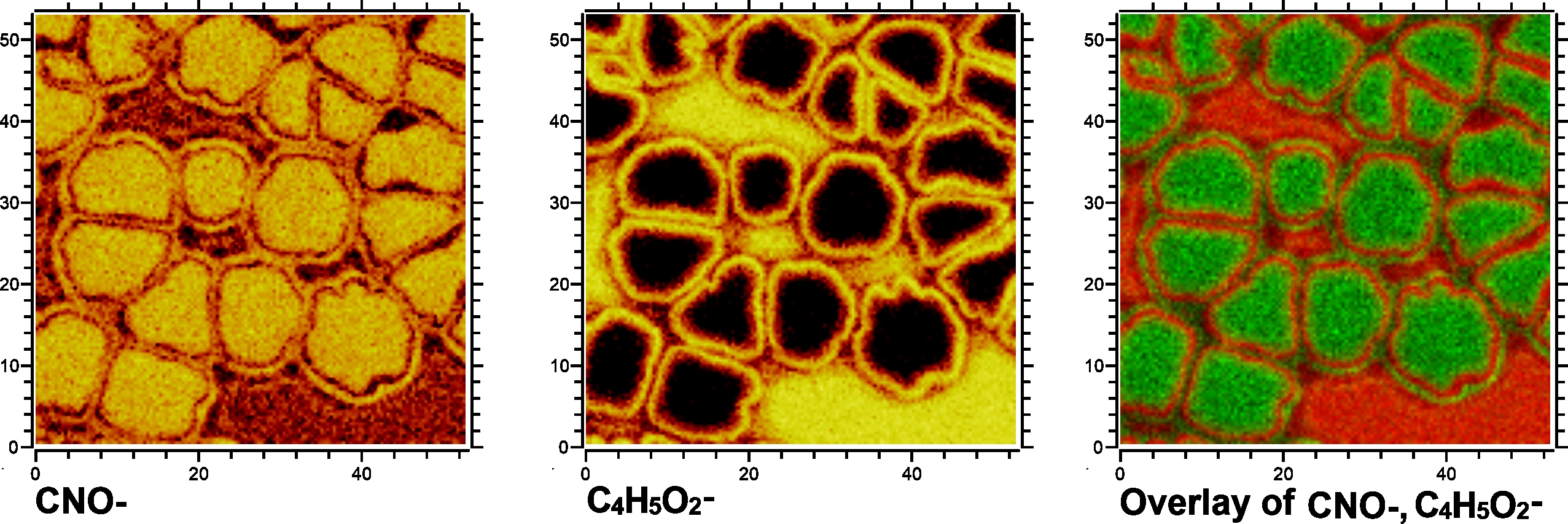Research
Our research teams apply various physics techniques (surface science methods, TOF-SIMS mass spectroscopy, advanced optical microscopy) to understand molecular & interfacial processes of biological systems at different levels from molecules to cells.
Biomolecules at surfaces (A. Budkowski et al.)

We focus on biomolecular nanolayers structure (to study immobilization, molecular arrangement & orientation vs. biorecognition) and (DNA, protein) micro-patterns (to explore patterning methods) More info…
Biosensor & biochip surfaces (K. Gajos, A. Budkowski et al.)
 We examine biomolecular multi-component nanolayers (DNA, protein) serving as biosensor surfaces to optimize bio-functionalization & enhance assay sensitivity. This issue is relevant e.g. for the biochips detecting human diseases and food contamination. More info…
We examine biomolecular multi-component nanolayers (DNA, protein) serving as biosensor surfaces to optimize bio-functionalization & enhance assay sensitivity. This issue is relevant e.g. for the biochips detecting human diseases and food contamination. More info…
Controllable biointerfaces (J. Raczkowska et al.)
 We focus on polymer coatings (for biomedical applications) inducing controllable interactions with proteins & cells: switchable stimuli-responsive biointerfaces (dependent on temperature & pH) and substrates modifying (cancerous) cells behavior (dependent on substrate elasticity). More info…
We focus on polymer coatings (for biomedical applications) inducing controllable interactions with proteins & cells: switchable stimuli-responsive biointerfaces (dependent on temperature & pH) and substrates modifying (cancerous) cells behavior (dependent on substrate elasticity). More info…
Cell biophysics (Z. Rajfur et al.)
 The main research themes are cell mechanotransduction and cell mechanobiology. We study biophysical molecular processes responsible for the regulation of cellular homeostasis in different environmental conditions. Migrating normal and cancer cells are our model biological system. We investigate how environmental mechanical stimuli influence cell migration and in effect, the process of cancer metastasis. More info…
The main research themes are cell mechanotransduction and cell mechanobiology. We study biophysical molecular processes responsible for the regulation of cellular homeostasis in different environmental conditions. Migrating normal and cancer cells are our model biological system. We investigate how environmental mechanical stimuli influence cell migration and in effect, the process of cancer metastasis. More info…
ToF-SIMS surface bioanalysis (K. Awsiuk et al.)

We use Time of Flight Secondary Ion Mass Spectrometry (ToF-SIMS) for molecular characterization of biosurfaces. ToF-SIMS allow to discern among different molecules to yield composition and map distribution of these biomolecules across a surface. More info…